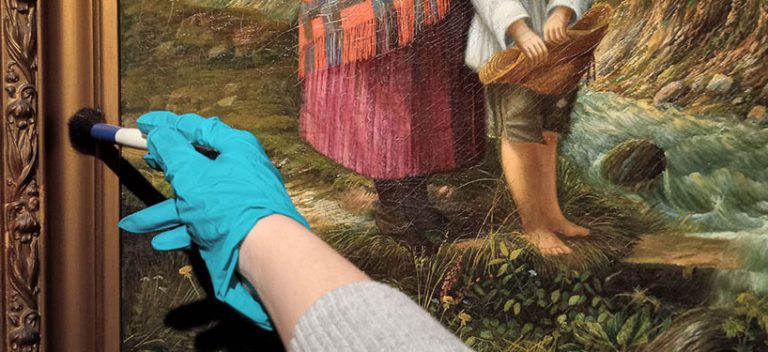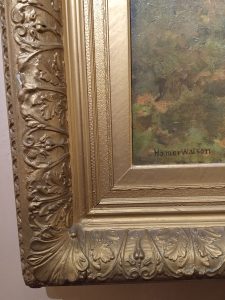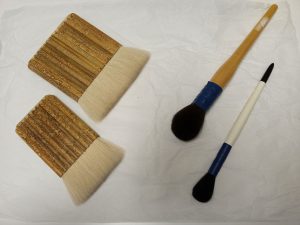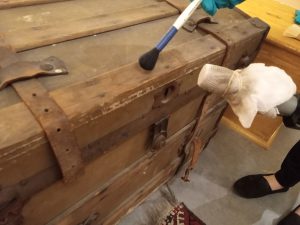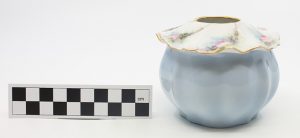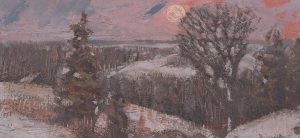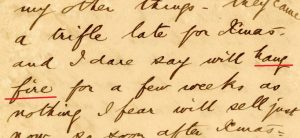Preventative Conservation: Caring for the Watson Studio
Homer Watson’s studio is a unique and important part of Homer Watson House & Gallery. We want the Watson Studio to be preserved for the future—that means taking on preventative conservation tasks!
Preventative conservation means taking measures to prevent artworks and artifacts from getting damaged, and much of this involves doing our best to adjust the environment where artifacts are displayed and stored. Historic objects can be negatively impacted by UV light, humidity, insects, and plenty of other “agents of deterioration”.
When looking around the Watson Studio, there are several examples of preventative conservation at work: UV filtering blinds, temperature and humidity monitors, and even a few pest traps tucked away in the corners. This month we focused on another kind of preventative conservation—dusting.
While something simple like dust may seem relatively harmless, it often builds up in cracks and crevices and then hardens or becomes “concreted”. This phenomenon leads to discolouration, abrasions, and sometimes speeds up corrosion processes in artifacts.
This is especially a problem for ornate frames with lots of curved decoration for dust to settle into and get stuck—of which the studio has tons! The gilding on these kinds of frames is also very fragile and can easily flake away. Regular feather dusters and cleaning cloths often scratch or cause micro-tearing on fragile historic surfaces. To combat this, we only use special conservation brushes made from goat hair while dusting, which is particularly soft. Other animal-hair brushes used for conservation cleaning include badger, pony, and even squirrel; the more fragile the artifact, the softer the brush.
Using these brushes, we gently dust off the frames from top to bottom to allow dust to fall downwards. Holding a vacuum under the brush on the very lowest suction setting, the dust is then gently sucked up. We never hold the vacuum directly to any surface as doing so would harm the artifact.
For objects that are particularly fragile (such as textiles), an extra layer of mesh is sometimes added to the end of the vacuum tube to catch any pieces that may otherwise accidentally get sucked up. In the Watson studio this technique is applied when dusting our antique wooden chest, as the fragile leather straps are especially susceptible to further flaking damage. For us, the best thing to use for this mesh is a cheese cloth.
It is important to follow these procedures to properly care for and preserve antique artifacts. Doing so ensures there is as little interference as possible from harmful agents of deterioration, and further extends the lifespan of Homer Watson’s paintings and other artifacts. Even something as simple as dusting is essential to preserving Homer’s works and legacy!

